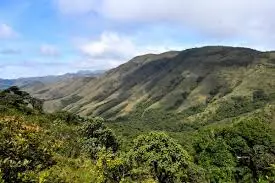SC to states, UTs: Form SITs, probe if forest land allotted for non-forestry purposes

Supreme Court Orders States, UTs to Form SITs to Probe Illegal Use of Forest Land
The Supreme Court of India has directed all States and Union Territories (UTs) to form Special Investigation Teams (SITs). These teams will investigate cases where forest land was allotted for purposes other than forestry. This order aims to curb illegal land diversion and protect India’s valuable forest cover.
Background: Why the Supreme Court Acted
The court’s directive came after a Public Interest Litigation (PIL) raised concerns about forest lands being diverted without proper approvals. The Forest (Conservation) Act, 1980 requires prior clearance from the central government before any forest land can be used for non-forestry purposes.
However, in many cases, forest land was allocated for projects like mining, construction, or tourism without following this rule. This led to environmental damage and loss of biodiversity. The court saw the need for urgent investigation to hold accountable those responsible.
What the SITs Will Do
The Supreme Court instructed each state and UT to create SITs with qualified members. These teams will include:
- Senior forest officials
- Legal experts
- Vigilance officers
- Independent environmental specialists
Their job will be to look into alleged illegal land allotments, assess the extent of damage, and recommend actions against violators. The SITs must report their findings to the respective High Courts and the Supreme Court regularly.
Clear Deadlines and Accountability
The court emphasized that states must form SITs quickly and begin investigations without delay. The teams must submit quarterly progress reports. This approach ensures transparency and continuous monitoring.
Importance of Protecting Forest Land
India’s forests play a crucial role in maintaining ecological balance. They support biodiversity, help regulate the climate, and protect water resources. Forests also serve as carbon sinks, reducing greenhouse gases.
Rapid urbanization and infrastructure development have increased pressure on forest land. Illegal diversion threatens wildlife habitats and worsens climate change impacts. This Supreme Court order aims to stop these harmful practices and preserve forests for future generations.
Reactions from Experts and Governments
Environmentalists praised the court’s decision. They said it would reveal many illegal diversions hidden over the years. “This is a strong move towards forest conservation and legal enforcement,” said an environmental lawyer.
State governments showed mixed reactions. Some expressed concerns about resources and manpower to form SITs and conduct investigations. Still, most states assured the court that they would comply fully and cooperate with the SITs.
How This Order Can Change Forest Governance
The Supreme Court’s directive can increase transparency and accountability in forest land management. It sends a clear message that no government or private entity can misuse forest land without facing consequences.
This move also strengthens the role of forest departments and environmental laws. By involving independent experts and legal officers, the SITs will conduct unbiased and thorough investigations.
Broader Impact on Environmental Protection
The SIT investigations could serve as a model for tackling illegal land use in other sectors. Many areas in India face similar challenges, such as wetlands, coastal zones, and agricultural land.
By enforcing stricter oversight, India can better protect its natural resources. The court’s order also highlights the judiciary’s growing role in environmental governance.
Challenges Ahead for SITs
SITs will face several challenges in their work. They must sift through large amounts of land records and approvals. They also need to coordinate with multiple government agencies and local authorities.
In some states, forest departments are understaffed and lack technical expertise. The court’s involvement can help mobilize necessary resources and support to overcome these obstacles.
Conclusion: A Positive Step Toward Forest Conservation
The Supreme Court’s direction to form SITs marks a crucial step in curbing illegal forest land diversion. The move will help restore faith in forest governance and promote sustainable development.
Protecting forest land is vital for India’s environment, climate goals, and the wellbeing of millions who depend on forests. If SITs function effectively, they can uncover wrongdoing and ensure proper action against violators.
India’s forests are priceless treasures. This order shows the judiciary’s commitment to guarding these treasures against misuse. It also encourages all stakeholders to respect laws and prioritize conservation.






